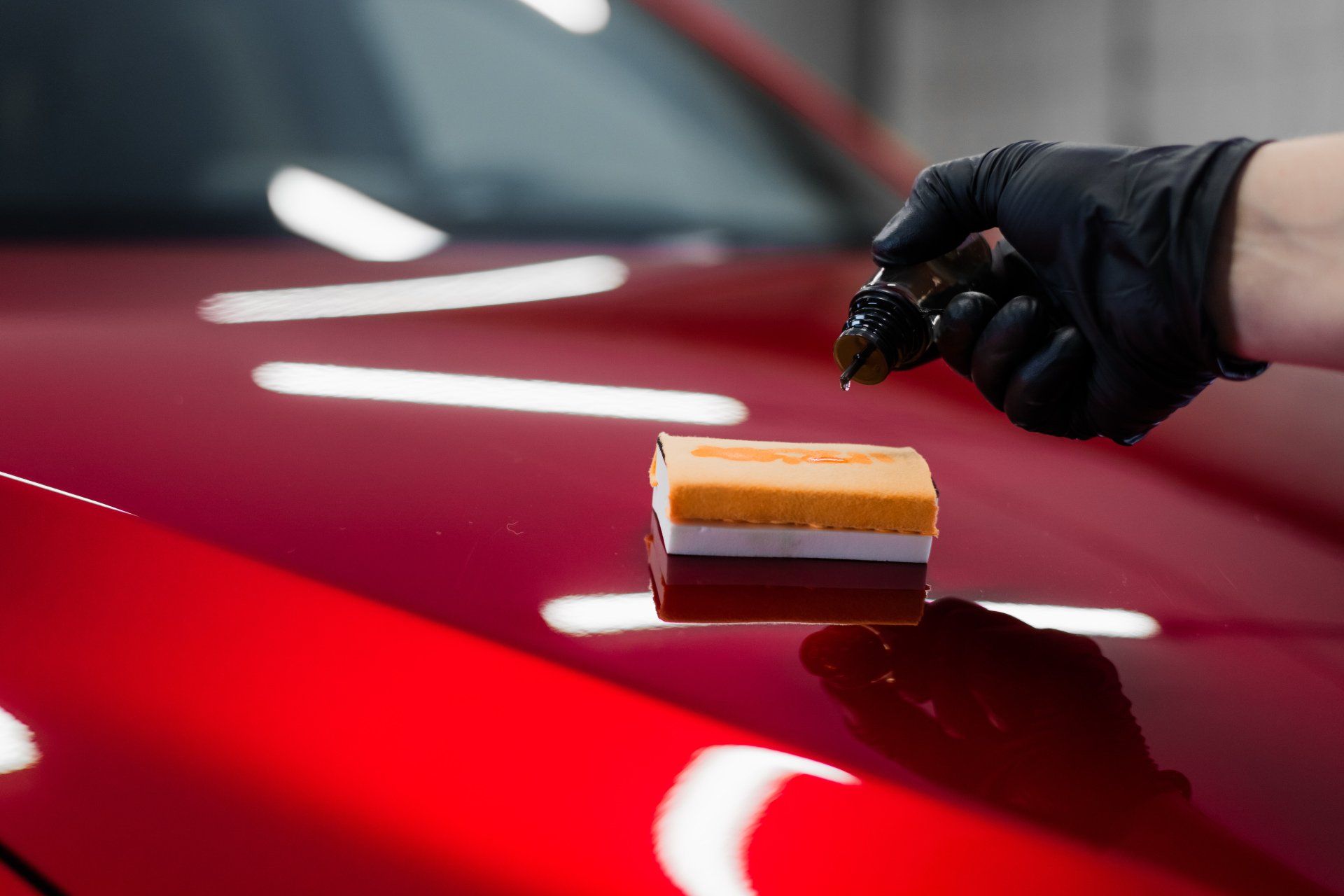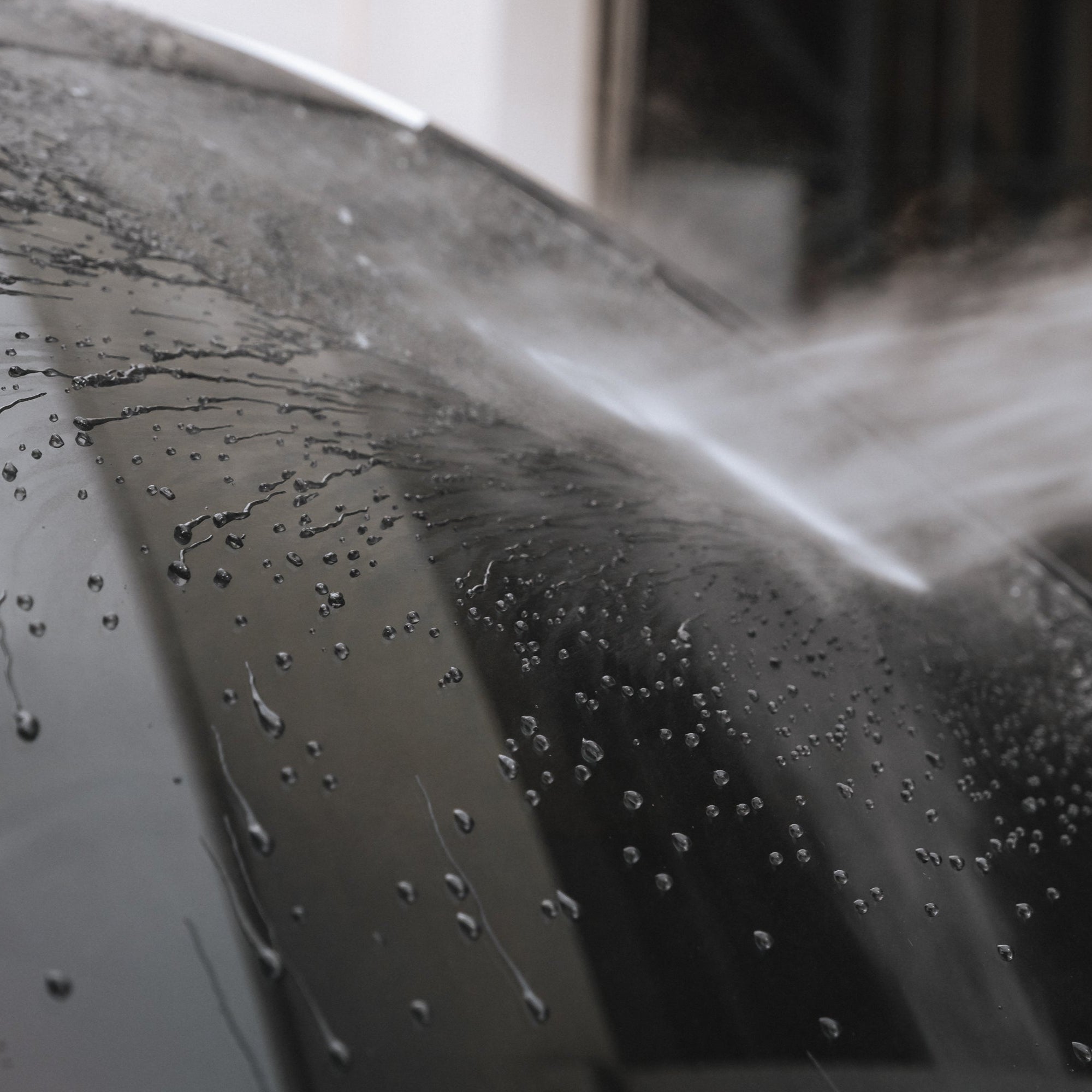Exploring Various Sorts Of Ceramic Coating for Numerous Lorry Finishes
Exploring Various Sorts Of Ceramic Coating for Numerous Lorry Finishes
Blog Article
The Value of Ceramic Coating: Safeguarding Your Car's Outside With Accuracy
In a period where maintaining the functional and aesthetic honesty of your vehicle is paramount, ceramic finishing arises as a critical remedy. With its unique bonding residential or commercial properties, ceramic finishing provides a degree of defense that far goes beyond traditional waxing approaches.
Advantages of Ceramic Coating
When it pertains to maintaining an automobile's aesthetic appeal, ceramic finish provides considerable advantages. This innovative protective layer supplies a resilient shield versus ecological pollutants, including dust, grime, and harmful UV rays. By forming a semi-permanent bond with the car's paint, ceramic coverings properly avoid oxidation and fading, guaranteeing that the vehicle preserves a glossy, showroom-like surface for an extensive period. This not only improves the vehicle's visual appeal however likewise adds to its long-lasting value.
Along with its protective qualities, ceramic covering offers remarkable hydrophobic buildings, triggering water and various other fluids to grain off effortlessly. This function simplifies the cleansing procedure, as dirt and debris are much less most likely to comply with the surface, reducing the frequency and effort required for maintenance. The layer's resistance to chemical spots from acidic impurities like bird droppings and tree sap is an additional notable advantage, lessening potential paint damages.
Ceramic finishes also boost scratch resistance, giving a layer that can absorb small abrasions and swirl marks. This feature is especially valuable in keeping an immaculate surface, lowering the likelihood of visible blemishes and maintaining the integrity of the car's paintwork gradually.

Just How Ceramic Finish Functions
Understanding the auto mechanics behind ceramic layer discloses its efficacy as a protective solution for lorries. Ceramic finishings are essentially fluid polymer applications that chemically bond with a car's manufacturing facility paint, creating a protective layer. This layer serves as an obstacle against ecological contaminants such as dirt, ultraviolet, and crud rays, which can weaken a cars and truck's outside gradually. The essential element in ceramic covering is silicon dioxide (SiO2), which originates from quartz crystals and is known for its extraordinary firmness and durability.
Application of ceramic coating includes a thorough procedure. Initially, the car's surface area have to be extensively cleaned and decontaminated to make sure ideal adhesion. As soon as used, the fluid polymer creates a semi-permanent bond with the paint, hardening into a clear, long lasting guard. This shield improves the auto's gloss and hydrophobic residential or commercial properties, promoting easier cleansing by causing water and pollutants to bead and slide off easily.
Furthermore, the covering's molecular structure provides resistance to small scrapes and chemical discolorations. Unlike waxes or sealants that sit on top of the paint, ceramic coverings incorporate with the surface, offering lasting security. This combination is basic to its effectiveness, guaranteeing the lorry's coating stays pristine for years.
Contrasting Ceramic Coating to Alternatives
In the realm of automobile protection, ceramic finish stands as an awesome alternative when contrasted to typical options such as waxes and sealants. While waxes supply a short-term lustrous surface, commonly lasting just a couple of weeks to months, ceramic coatings offer a longer-lasting remedy, typically sustaining for many years. This resilience Recommended Site is associated to the chemical bonding that occurs when ceramic finishes are used, developing a solid Visit This Link layer that is resistant to ecological hazards.
Contrastingly, sealants, although even more durable than waxes, still disappoint the durable protection used by ceramic finishings. Sealants can generally last for as much as a year, offering an artificial shield versus particular elements. However, they do not have the exceptional hydrophobic properties and UV defense that ceramic coatings deliver.
In addition, ceramic finishes offer enhanced scrape resistance, which neither waxes nor sealers can properly match (ceramic coating). This is particularly valuable in maintaining an auto's excellent appearance. Furthermore, ceramic coverings streamline maintenance initiatives by decreasing the adherence of dust and gunk, consequently facilitating easier cleansing. In recap, while traditional waxes and sealers provide fundamental security, ceramic coatings offer an extensive, long-lasting remedy that dramatically boosts and protects the vehicle's exterior finish.
Application Process Clarified
Using ceramic finishing to a car calls for a precise procedure to make certain optimum results and sturdiness. When cleaned, the automobile is dried out and polished to get rid of any flaws, as any existing scrapes or swirls can end up being much more obvious after the finishing is applied.
Complying with surface area preparation, the application of the ceramic coating begins. The covering is commonly used in a climate-controlled environment to avoid dirt particles from deciding on the newly cleaned surface area. Using an applicator pad, the ceramic coating is applied in small sections to guarantee even protection. It is important to comply with the maker's standards concerning the proper curing time and application thickness.
After application, the finishing needs a particular curing duration, throughout which the car ought to be safeguarded from water and impurities. This healing process can vary relying on the product yet generally varies from 24 to two days. Ultimately, this detailed procedure is pivotal in accomplishing a glossy and durable finish.
Maintenance Tips for Long Life
To maintain the long site life of a ceramic finishing, adherence to a regimented upkeep regimen is crucial. Normal washing is vital; use a pH-neutral car shampoo and soft microfiber gloves to stay clear of abrasions. Prevent automatic automobile cleans, as their harsh brushes can compromise the layer's stability. Rather, go with a hand laundry to ensure thorough yet gentle cleansing.
Post-wash, drying the vehicle with a clean microfiber towel protects against water places that might degrade the finishing in time. Furthermore, apply a ceramic finish booster every couple of months. These boosters strengthen the hydrophobic residential or commercial properties and enhance the finishing's protective capacities, guaranteeing it remains effective against pollutants.
Bear in mind that parking places play a crucial function in maintenance. ceramic coating. Whenever possible, park in shaded locations to reduce UV exposure, which can progressively weaken the finish. For long-lasting storage space, think about making use of an auto cover for added security versus environmental aspects
Final Thought
In final thought, ceramic coating serves as a critical protective layer for lorry outsides, offering lasting protection against ecological factors such as uv, dirt, and gunk rays. Recognizing the application procedure and adhering to upkeep recommendations are essential for optimizing the long life and efficiency of ceramic finish.
When it comes to maintaining a vehicle's aesthetic appeal, ceramic covering offers considerable advantages. By forming a semi-permanent bond with the lorry's paint, ceramic finishes properly protect against oxidation and fading, guaranteeing that the auto maintains a shiny, showroom-like coating for a prolonged period. Ceramic coverings are essentially liquid polymer applications that chemically bond with a cars and truck's manufacturing facility paint, developing a protective layer. In summary, while standard waxes and sealants use basic security, ceramic finishes offer a comprehensive, lasting service that significantly enhances and preserves the vehicle's outside coating.

Report this page